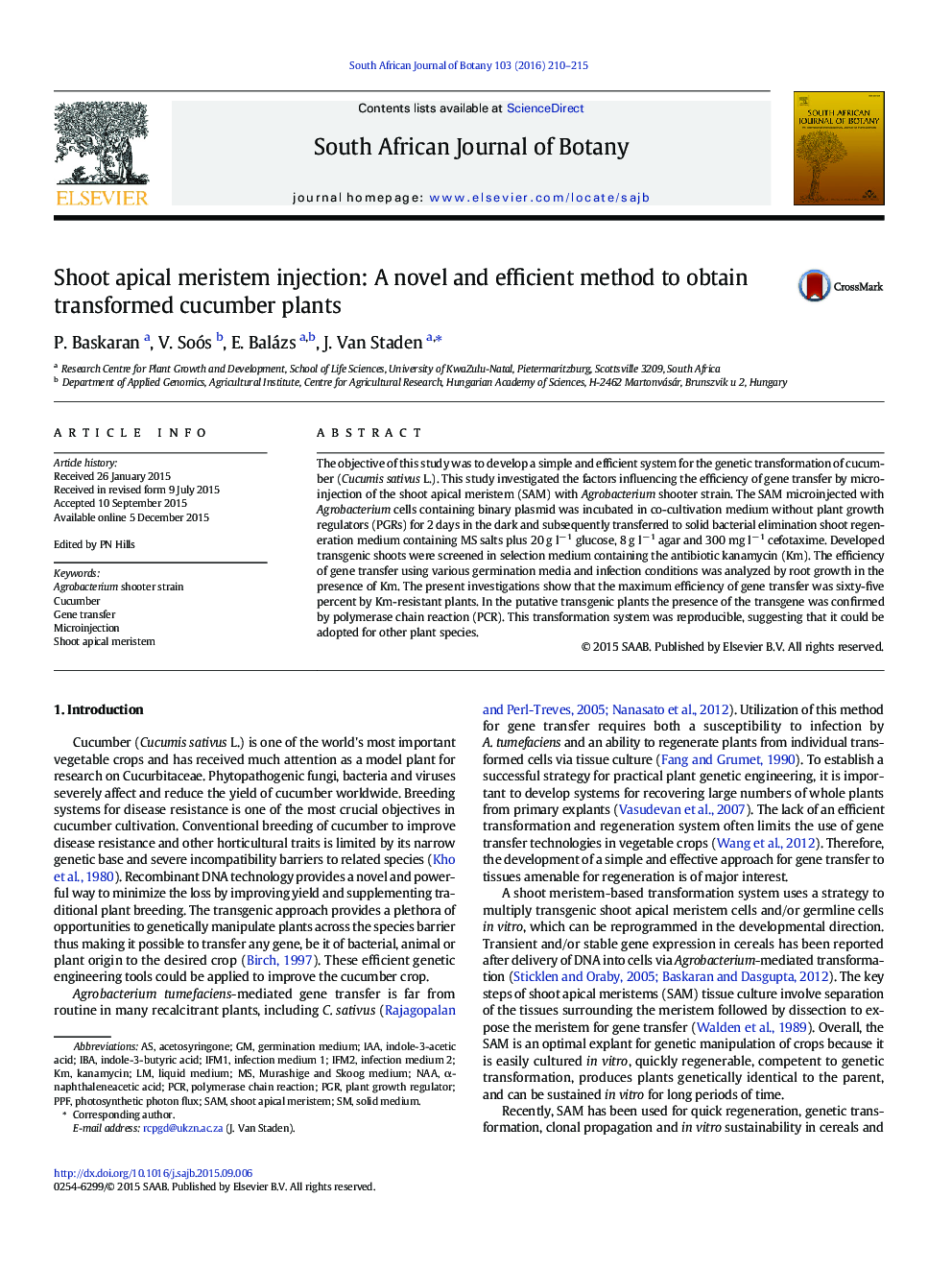| Article ID | Journal | Published Year | Pages | File Type |
|---|---|---|---|---|
| 4520285 | South African Journal of Botany | 2016 | 6 Pages |
•A novel and efficient cucumber transformation system is reported for the first time.•Microinjected SAM produced maximum shoots with Km-resistant plants.•Microinjection of shooter strain exhibited high frequency transformation.•The protocol can be applied for molecular breeding of cucumber using various genetic traits.
The objective of this study was to develop a simple and efficient system for the genetic transformation of cucumber (Cucumis sativus L.). This study investigated the factors influencing the efficiency of gene transfer by microinjection of the shoot apical meristem (SAM) with Agrobacterium shooter strain. The SAM microinjected with Agrobacterium cells containing binary plasmid was incubated in co-cultivation medium without plant growth regulators (PGRs) for 2 days in the dark and subsequently transferred to solid bacterial elimination shoot regeneration medium containing MS salts plus 20 g l− 1 glucose, 8 g l− 1 agar and 300 mg l− 1 cefotaxime. Developed transgenic shoots were screened in selection medium containing the antibiotic kanamycin (Km). The efficiency of gene transfer using various germination media and infection conditions was analyzed by root growth in the presence of Km. The present investigations show that the maximum efficiency of gene transfer was sixty-five percent by Km-resistant plants. In the putative transgenic plants the presence of the transgene was confirmed by polymerase chain reaction (PCR). This transformation system was reproducible, suggesting that it could be adopted for other plant species.
